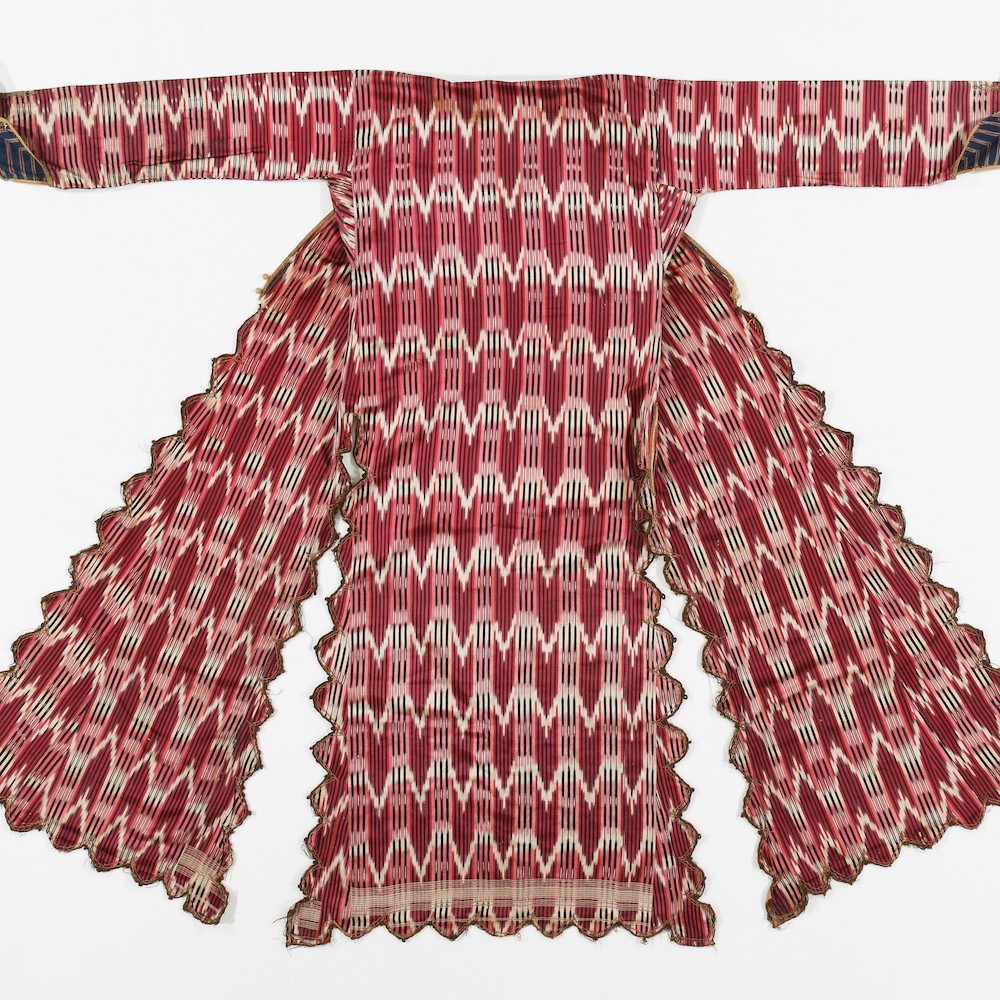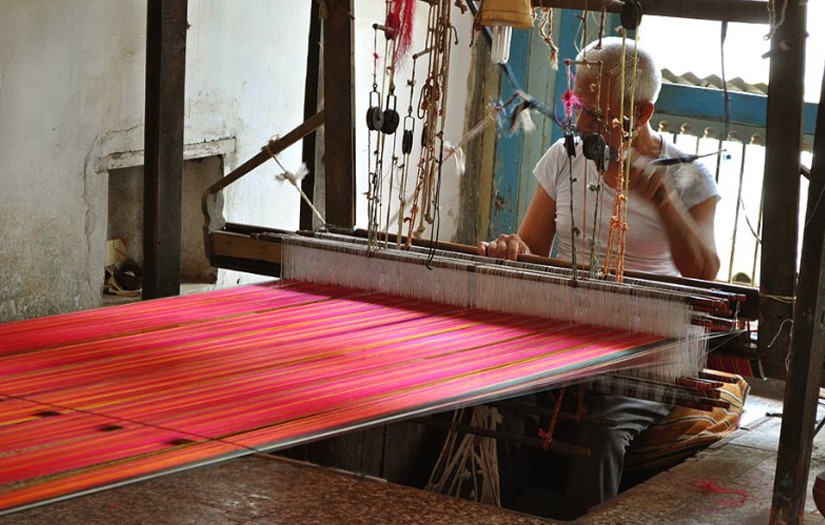Inside SAM’s World of Compelling Cloth: Woman’s Robe (Mashru)
Mashru is an Arabic word meaning ‘permitted’ or ‘allowed.’ In many Islamic cultures, a mashru is a garment made of a silk-cotton blend worn my individuals of all social classes. This stop of the smartphone tour of Ikat: A World of Compelling Cloth explores the history of mashru garments with additional content not found in SAM’s galleries. Learn about these garments below and see an example for yourself by visiting the exhibition at SAM’s downtown location before it closes Monday, May 29. Plus, explore all of the stops in SAM’s free verbal description tour on SoundCloud.
One ikat textile that has traveled across Asia is the satin-woven fabric known in India as mashru. This type of silk-cotton blend is called mashru. Mashru cloths were worn by men and women across the Islamic world. In some Islamic cultures, Muslims are not permitted to wear pure silk garments, so textile makers in India experimented by adding cotton into the silk weave, creating a garment that was soft and lightweight, but also acceptable to wear.
Verbal Desciption of Woman’s Robe (Mashru)
This garment is a mashru. Mashru is spelled M-A-S-H-R-U. The robe was made in Syria in the 19th century and measures five feet, six inches tall by four feet, five inches wide. The garment is made of silk and cotton thread and metallic embroidery. The robe is hung on a ‘T’ frame with the arm sleeves stretched out and the back of the garment facing the viewer. A dense pattern of stripes and arrowhead shapes defines this woman’s robe from Syria. The robe’s hem extends down to the wearer’s knees and the long sleeves reach to the wrists.
Let’s start by talking about the pattern on the outside of the garment. Long, thin vertical stripes alternate in cherry red, black, and light pink. Layering on top of these stripes are horizontal bands of white arrowhead shapes which create a complex illusion of depth. By contrast, the inside of the robe is lined with a soft cream white cotton. The inside of the sleeves are decorated with a cotton ikat cloth with blue and white stripes.
Now, let’s focus on the structure of the robe. The body of the robe is made three vertical panels of fabric—roughly equal in size—that hang down separate from one another so you can imagine how they might sway and twirl as the wearer moved about. To join these panels together and close up the robe, the wearer would fasten a series of balls and loops found along the edge of each panel which is scalloped with reprieving triangle patterns. As we zoom into that edge, notice how metallic thread is embroidered into decorative designs, adding weight and stiffness.
The rest of the robe is thin and lightweight; the surface is silky smooth. This comes from the blend of fibers used here: silk for the warp threads—which run vertically—and cotton for the weft threads which run horizontally. This type of silk-cotton blend is called a mashru, an Arabic word meaning permitted or allowed. Mashru cloths were worn by men and women across the Islamic world. In some Islamic cultures, Muslims are not permitted to wear pure silk garments so textile makers in India experimented by adding cotton into the silk weave, creating a garment that was soft and lightweight, but also acceptable to wear.
– Lily Hansen, Marketing Content Creator
Photos: Mushruu (woman’s Ottoman robe), 19th century, Silk Road (garment made in Ottoman world; ikat cloth possibly Syrian), silk warp ikat and cotton weft, metallic embroidery, 53 x 66 in., Collection of David and Marita Paly. Traditional Mashru Weaving in Gujurat, India.

